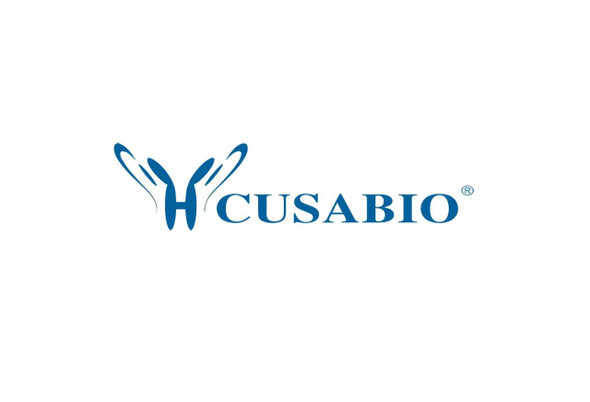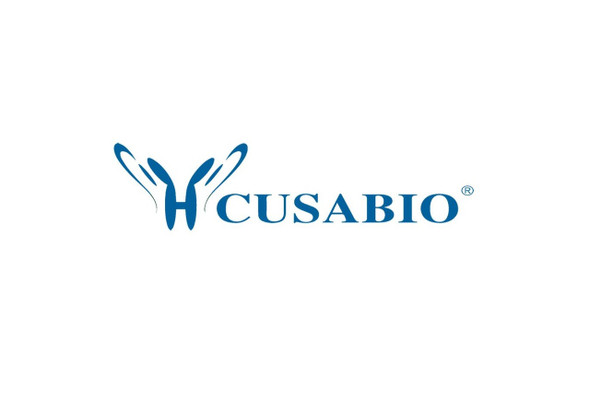Cusabio Human Recombinants
Recombinant Human Cone-rod homeobox protein (CRX) | CSB-EP006004HU
- SKU:
- CSB-EP006004HU
- Availability:
- 13 - 23 Working Days
Description
Recombinant Human Cone-rod homeobox protein (CRX) | CSB-EP006004HU | Cusabio
Alternative Name(s): CORD2
Gene Names: CRX
Research Areas: Epigenetics and Nuclear Signaling
Organism: Homo sapiens (Human)
AA Sequence: MMAYMNPGPHYSVNALALSGPSVDLMHQAVPYPSAPRKQRRERTTFTRSQLEELEALFAKTQYPDVYAREEVALKINLPESRVQVWFKNRRAKCRQQRQQQKQQQQPPGGQAKARPAKRKAGTSPRPSTDVCPDPLGISDSYSPPLPGPSGSPTTAVATVSIWSPASESPLPEAQRAGLVASGPSLTSAPYAMTYAPASAFCSSPSAYGSPSSYFSGLDPYLSPMVPQLGGPALSPLSGPSVGPSLAQSPTSLSGQSYGAYSPVDSLEFKDPTGTWKFTYNPMDPLDYKDQSAWKFQIL
Source: E.coli
Tag Info: N-terminal 10xHis-tagged and C-terminal Myc-tagged
Expression Region: 1-299aa
Sequence Info: Full Length
MW: 39.3 kDa
Purity: Greater than 85% as determined by SDS-PAGE.
Relevance: Transcription factor that binds and transactivates the sequence 5'-TAATC[CA]-3' which is found upstream of several photoreceptor-specific genes, including the opsin genes. Acts synergistically with other transcription factors, such as NRL, RORB and RAX, to regulate photoreceptor cell-specific gene transcription. Essential for the maintenance of mammalian photoreceptors.
Reference: "Mutations in the cone-rod homeobox gene are associated with the cone-rod dystrophy photoreceptor degeneration." Swain P.K., Chen S., Wang Q.-L., Affatigato L.M., Coats C.L., Brady K.D., Fishman G.A., Jacobson S.G., Swaroop A., Stone E., Sieving P.A., Zack D.J. Neuron 19:1329-1336(1997)
Storage: The shelf life is related to many factors, storage state, buffer ingredients, storage temperature and the stability of the protein itself. Generally, the shelf life of liquid form is 6 months at -20?/-80?. The shelf life of lyophilized form is 12 months at -20?/-80?.
Notes: Repeated freezing and thawing is not recommended. Store working aliquots at 4? for up to one week.
Function: Transcription factor that binds and transactivates the sequence 5'-TAATC[CA]-3' which is found upstream of several photoreceptor-specific genes, including the opsin genes. Acts synergistically with other transcription factors, such as NRL, RORB and RAX, to regulate photoreceptor cell-specific gene transcription. Essential for the maintenance of mammalian photoreceptors.
Involvement in disease: Leber congenital amaurosis 7 (LCA7); Cone-rod dystrophy 2 (CORD2); Retinitis pigmentosa (RP)
Subcellular Location: Nucleus
Protein Families: Paired homeobox family
Tissue Specificity: Retina.
Paythway:
Form: Liquid or Lyophilized powder
Buffer: If the delivery form is liquid, the default storage buffer is Tris/PBS-based buffer, 5%-50% glycerol. If the delivery form is lyophilized powder, the buffer before lyophilization is Tris/PBS-based buffer, 6% Trehalose, pH 8.0.
Reconstitution: We recommend that this vial be briefly centrifuged prior to opening to bring the contents to the bottom. Please reconstitute protein in deionized sterile water to a concentration of 0.1-1.0 mg/mL.We recommend to add 5-50% of glycerol (final concentration) and aliquot for long-term storage at -20?/-80?. Our default final concentration of glycerol is 50%. Customers could use it as reference.
Uniprot ID: O43186
HGNC Database Link: HGNC
UniGene Database Link: UniGene
KEGG Database Link: KEGG
STRING Database Link: STRING
OMIM Database Link: OMIM











